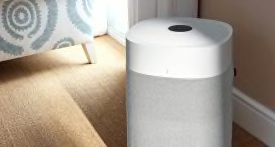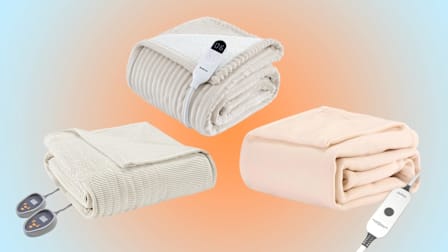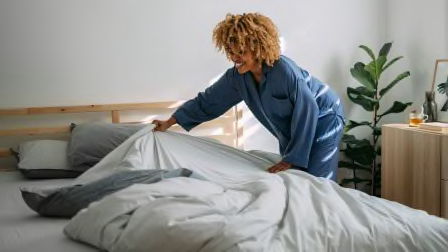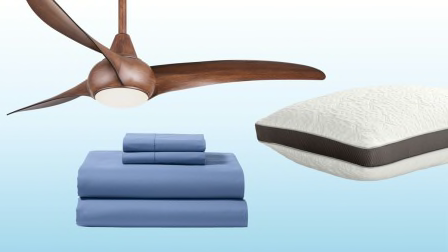Best Duvets for Every Kind of Sleeper
A CR staffer snuggled up with more than half a dozen comforters to help you find a cozy fit
When you shop through retailer links on our site, we may earn affiliate commissions. 100% of the fees we collect are used to support our nonprofit mission. Learn more.
A great duvet is essential to a comfortable bed. Fluffier than a blanket or quilt but pleasingly toastier, the best duvets—or comforters—keep you cozy without making you feel trapped. But with so many different types of fillers and fabrics, it’s hard to pick the right duvet without snuggling up with them firsthand.
That’s why for more than four months I slept under seven popular king-sized duvets for two weeks each. I noted how uniformly the filler was distributed, how soft the shell material felt to the touch, and how heavy or light the duvet felt as a whole. I also recorded each duvet’s level of warmth and breathability, and noted the way it draped (how easily it fit into the cover and draped over my bed and body).
All of the duvets had four corner loops for easy attachment to a cover (not included), and almost all came with a zip-up storage bag unless noted in my review. Almost all were claimed to be hypoallergenic—particularly important for those with a sensitivity to feathers—and machine washable and dryable.
What I discovered: Each design has its pros and cons, and the best duvet ultimately depends on personal preference. To offer a starting point for your search, I’ve highlighted the advantages and drawbacks of each of the tested models. Use my takes to help you find the right fit for you.
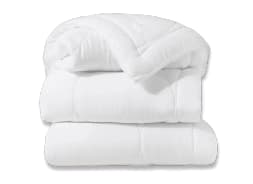
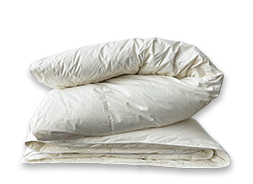
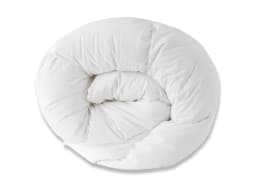

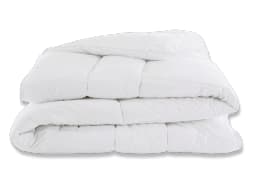
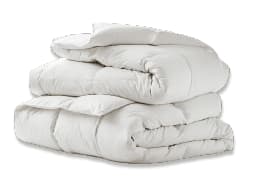
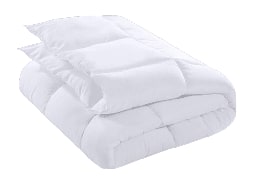
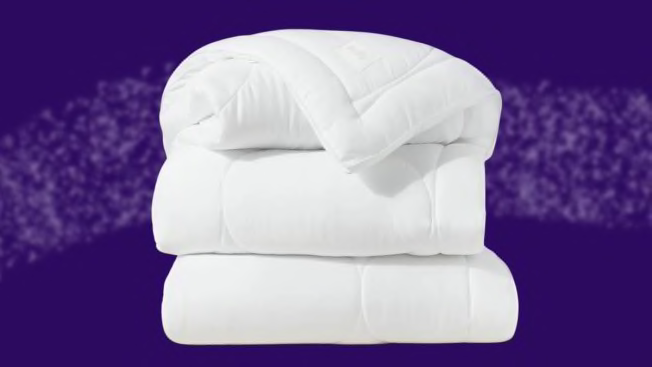
As a bedding expert, I’m constantly bombarded by marketing claims about “softness”—soft sheets, soft mattresses, soft pillows—you get it. And while many products don’t live up to the hype, this comforter delivers. Next to my Labradoodle Duke, it’s truly the cuddliest thing I’ve ever slept with on my bed. While duvets are typically used with a duvet cover, I didn’t want to stuff this one into a shell. It felt smooth and silky against my skin, and the fill—thick and scrunchable—was extremely fluffy, almost like a squishy pillow made into a blanket.
The company says it upcycles about 50 plastic bottles, depending on the size of the comforter, to make its 100-percent BPA-free, recycled PET fill. The material is uniformly layered into the shell, unlike the design of most comforters, which have clusters of filling placed into a stitched-box design. The result is that the Buffy isn’t expected to clump or shed (even when it’s machine-washed), and it offers temperature consistency throughout. Because of this overall favorable experience, I didn’t even mind that it doesn’t come with a bedding bag for easy storage.
The company offers a seven-night trial on bedding purchases, so you can sleep-test it and decide whether or not it’s a fit before Buffy officially charges your card. A temporary hold is used in its place.
Claimed certifications: Oeko-Tex Standard 100, GRS (Global Recycled Standard)
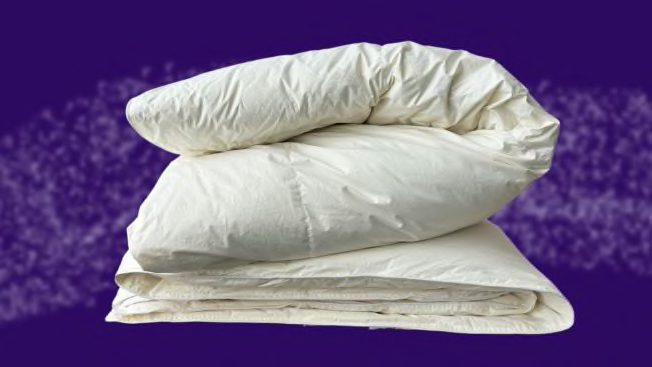
The L.L. Bean goose-down duvet is quite breathable and extremely lightweight. And yet it did an excellent job at providing a warm, cozy feel, too. Unlike the Buffy (above), however, this duvet is a bit stiffer on the surface. It is a true insert, with its most optimal qualities shining through inside of a cover.
That could be a turnoff to some, particularly if you expect a silky-soft feel from your blanket, or if you’re bothered by the crinkly sound it makes when you move under it. But the 100% cotton shell means it will soften over time with washing and use, and its quality construction suggests it should last.
This comforter has a baffle-box stitch, which means fabric is placed at the top and bottom of each grid and the stitching throughout creates a pocket of equal weight and filling—warming you consistently from head to toe. That’s a real plus when it comes to washing your duvet, as the filling is expected to stay in place—no clumping or moving to other areas of the covering. While it’s not as luxe-feeling as the Brooklinen, below—another down pick that has the same baffle-box design—it may appeal to those who prefer a down duvet that feels less heavy.
If you’re not satisfied with your comforter purchase, L.L. Bean does allow you to return it within one year for a refund, subject to a $6.50 postage fee.
Claimed certification: Responsible Down Standard
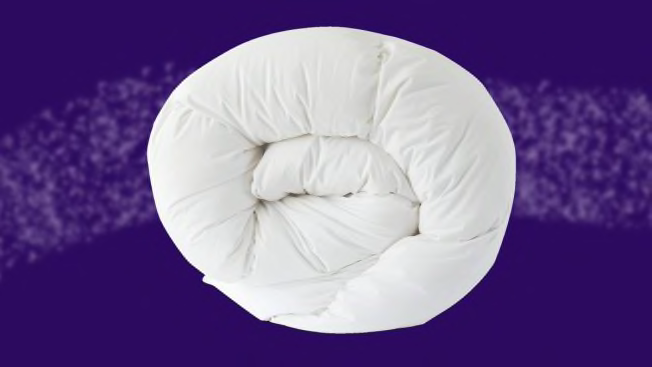
I sleep hot, so I appreciate how lightweight and breathable the Quince Premium Down Alternative Comforter felt. Airy but substantial, the Quince kept me warm but not too warm, while it also felt soft and fluffy.
Its cluster-filled construction is evenly distributed from top to bottom, thanks to its stitched grid design. And because it’s a down alternative made of microfiber, which is thinner and not as closely woven as polyester fibers, it’s more breathable than those with a fill made from polyester, a common material for down alternative duvets.
Because this pick isn’t as hefty as a typical down comforter, it can provide a comfortable cuddle all year long. But if you prefer an exceptionally warm feel or if you live in a colder climate, you may be better off trying Quince’s heavier goose downs and premium downs. We haven’t tried these yet, but they’re all at a price far below that of many competitors.
Another notch for the Quince duvet: If you’re not satisfied with your bedding purchase, the company gives you 365 days to return it for a refund.
Claimed certifications: None

Brooklinen makes some of the best sheets CR has tested, and we found that quality construction coupled with an ultrasoft feel in its comforter as well.
The brand offers both down and down-alternative duvets, and each is available in lightweight all-season or ultra-warm. I chose the all-season down, a happy medium when it comes to weight. Despite it being stuffed with an 80 percent duck-down cluster fill, I didn’t notice clumping or see any feathers escaping, which is a common occurrence with comforters. Instead, I experienced a cozy, fluffy covering that moved fairly well with my every toss and turn and provided even temperature distribution. Its sateen shell was soft to the touch and felt luxe.
Like most of the comforters I slept with, the Brooklinen has a grid design and four corner ties to help keep it in place, but it comes at a premium price. At roughly $500 for a king and nearly $400 for a queen, it’s an investment, no doubt. But for those looking for a true down comforter that delivers on quality, warmth, and breathability, the Brooklinen is worth the splurge.
The company offers a 365-day return policy subject to a $9.95 return fee.
Claimed certification: Downmark

My first impression of this comforter was that it was warm—cold-climate warm, and there was definitely some weight to the covering. While fluffy and (perhaps to some) comforting, it can also feel restrictive, particularly toward the feet, if you’re prone to tossing and turning at night.
But if you don’t mind that, you may benefit from the duvet’s claimed micro-barrier fabric, which is woven to a tightness meant to minimize dust and keep bedbugs from penetrating it, according to the duvet’s designer, Robin Wilson.
This allergen-aware comforter also has a prewashed down-alternative polyfill and a woven cotton cover. Another distinguishing feature: The Clean Home Design comforter is 94 inches by 108 inches—4 inches more than the typical king duvet, allowing it to completely fill out a cover and offer optimal draping.
Claimed certifications: Made in Green by Oeko-Tex, BCI (Better Cotton Initiative)
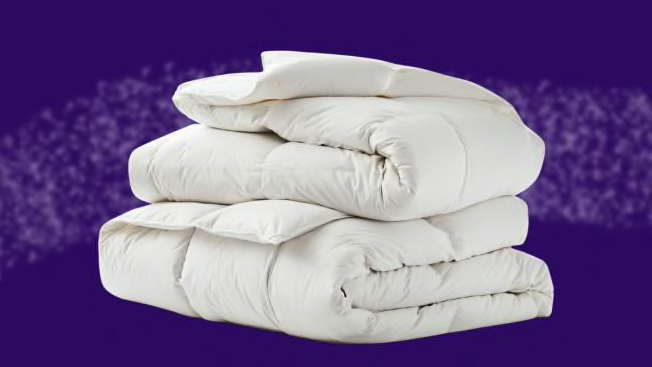
Despite its name, the West Elm Cooling Down doesn’t necessarily feel cool to the touch or have cooling properties. But what it does have is a moisture-wicking polyester to keep you from feeling sweaty. It worked. Even though I tend to sleep hot, I never woke up drenched with perspiration.
That said, this duvet is on the toasty side. After sleeping under it, I had a hard time taking it seriously as an “all-season” option, as touted. And this isn’t even the warmest option available from West Elm. The retailer also sells the HydraCool in extra-warm, made of a higher-density fill.
It’s also quite weighty—at least for my 5 foot, 6 inch, 125-pound frame. While that’s not necessarily a bad thing (after all, there are plenty of people who choose to sleep under a weighted blanket), I felt it inhibited movement a tad, which some may find off-putting.
Still, for sleepers who like to feel extra-embraced, the HydroCool comforter does the job, and the premium Euro box construction offers a layer of material between the shell and the fill, helping to eliminate cold spots and keep the fill from clumping. This results in a cozy feeling from the shoulders down to the toes.
Claimed certification: Oeko-Tex Standard 100
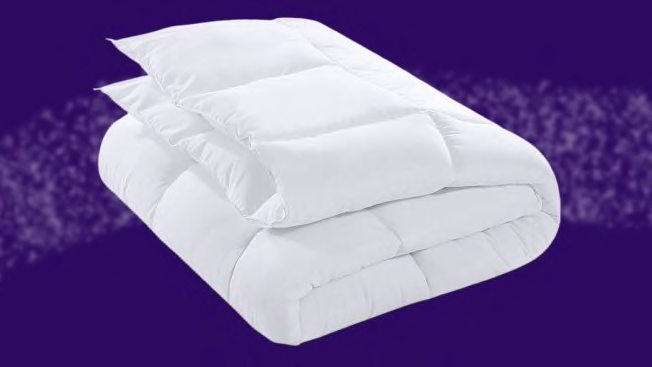
With the price of some comforters surpassing $1,000 for a king, it’s nice to know that a cozy quality comforter is financially within reach. At well under $50, the Utopia Bedding duvet is sturdy, with a similar construction to higher-priced duvets. While it’s not as fluffy as the Cloud Comforter and doesn’t come close to the warmth of the Brooklinen all-season down, it does make for a practical option that can take you from April through September in four-season locales or if you’re somebody who doesn’t get too cold.
But as with most budget options, there are some trade-offs. Chief among them is in the material. While many duvets have a natural cotton shell to help with breathability, the Utopia Bedding duvet has a siliconized polyester fill that’s engineered to repel bacteria and mites, according to the manufacturer. But it doesn’t allow for airflow like natural fibers do. It’s also paired with a polyester shell. The comforter doesn’t claim to be hypoallergenic.
Still, it’s soft, airy, and lightweight, and allows for easy movement. Though this could easily be your main covering, the price of this comforter makes it a great budget pick for guest rooms as well.
Claimed certification: Oeko-Tex Standard 100
6 Things to Consider When Buying a Duvet
It’s hard to tell if a comforter will suit your needs before trying it out. But these key features, whether listed on the packaging or a product page online, can give you some clues.
1. Filler material: Sourced from the underbelly of waterfowl, down comforters tend to be lightweight and more breathable than down alternatives. They’re also quite durable, given that down feathers tend to hold their loft and warmth for longer than alternative fills. Down alternatives are often made with cotton or synthetic materials like rayon, microfiber, or polyester. They are designed to mimic down comforters but tend to be hypoallergenic, a plus for people with allergies, asthma, and sensitive skin.
If you’re somebody who sleeps hot, choosing a natural fiber like cotton or wool will help you stay comfortable throughout the night. But if you’re prone to night sweats, a synthetic fiber fill with moisture-wicking properties, like polyester, might be an optimal choice.
2. Fill power: This number indicates the quality of a down. This number indicates the quality of a down filler and is derived from a lab test measuring how many cubic inches of loft 1 ounce of that down fill produces. Industry professionals view a fill power of 600 or more as a good quality comforter. Higher fill power numbers mean a greater insulating efficiency but don’t necessarily indicate how warm a comforter will be.
3. Shell material: As with filler material, a comforter with a shell material made of natural fibers such as cotton or linen is more breathable than a synthetic one. And among synthetics, materials like microfiber and polyester are known to be sweat-wicking.
4. Stitching: Baffle box, box stitch, and square stitch are all common forms of the grid stitch design. These patterns isolate fill in a square box of various sizes to help evenly distribute warmth. It also prevents clumping and movement of the fill. Ring stitching (which incorporates circle-shaped tacking throughout the entire comforter) or tufted stitching (which has large areas of fill between tacking) confines the filling but with fewer seams. The larger the area between stitches, the higher the risk for shifting and bunching.
5. Size: Comforters come in the standard twin, twin XL, full, queen, king, and California king sizes. If you want a fluffier look and feel for your bedding, size up your comforter and pair it with the right-sized duvet cover.
6. Return policy: Finding a duvet that moves with your body, keeps your internal temperature balanced, and helps promote sound sleep may be a matter of trial and error. Consider a flexible return policy in case you don’t choose right the first time.
What’s the Difference Between a Duvet and a Comforter?
Generally speaking, the terms duvet and comforter are used interchangeably. Both describe warm and fluffy covering used to keep you cozy at night. But in the U.S., the term comforter is also associated with a one-piece covering that comes in different colors and patterns, while a duvet usually comes in a plain white shell, designed to be encased in a separate cover that’s typically sold separately. The outlier to this rule is a coverless duvet—a newcomer to the bedding market that appears to be growing in popularity. Its shell doesn’t come with attachment loops, and the whole thing is typically machine washable. (That’s not always the case with conventional down comforters, which may require a trip to the dry cleaners.)











